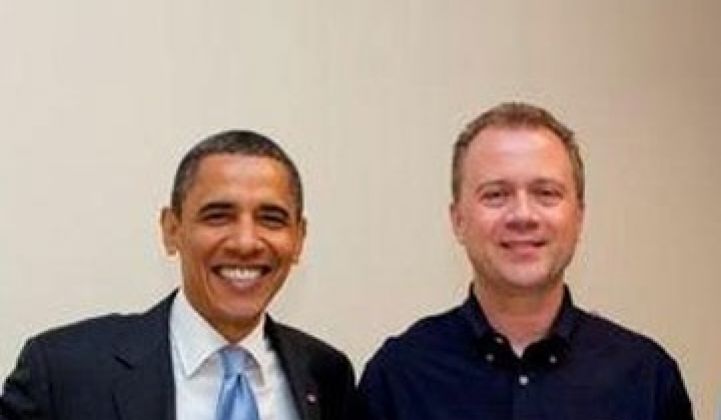Last week we heard through the grapevine that Solyndra Senior VP Dr. J. Kelly Truman had left the company he helped found and was looking for a new job. He's found it.
Truman has joined Deeya Energy, a VC-financed firm in a completely different greentech sector, according to an announcement from the company.
Deeya builds Redox flow batteries, sometimes called regenerative fuel cells. A flow battery is a type of rechargeable battery in which electrolyte flows through an electrochemical cell, which in turn converts chemical energy directly to electricity. Ajay Arora, a VP at Deeya, points out that the firm's flow battery is purely an energy storage device and not a net energy producer like fuel cells. Fuel cells are different from electrochemical cell batteries in that they consume reactant from an external source, which must be replenished.
Energy storage of this nature is a highly materials-centric technology and Truman's education, including a B.S. in Metallurgical Engineering and Materials Science from the University of Notre Dame, and an M.S. and Ph.D. in Materials Science and Engineering from the University of Florida, seems absolutely relevant.
During his time at Solyndra, Dr. Truman led the company's efforts in marketing, sales, business development, customer service, government affairs, IP and corporate communications.
Why would a Solyndra founder, making more than $300,000 per year and owning at one point about 0.5% of the firm, leave the highly-charged startup?
It is our understanding that there is a complete and painful financial restructuring going on at Solyndra, which is strongly affecting both employee shareholders and inside investors.
Deeya Energy positions itself as an energy storage company, and doesn't use the word "fuel cell" or even "redox fuel cell" term too often. Fuel cells have a difficult commercialization history. Here is the list of profitable fuel cell firms:
1.
2.
3.
Deeya is initially going after the telecom tower backup market in developing nations. Eventually, other storage applications in renewables like solar and wind could presumably emerge. Other firms like IdaTech are going after the same market.
The telecom backup application is the "lowest-hanging fruit" and distant markets are most in need of back-up because of their remote nature, harsh environments and weak electrical grids. The developing world is building tens of thousands, perhaps hundreds of thousands, of new towers that will require back-up. In the developing world, cell phone plans are still by the minute, so every minute of downtime means millions of dollars lost for the larger carriers.
This technology is deployed at the end of the line in the worst environments, where the main competitors are diesel gen sets and lead acid batteries. Based on a quick look at my favorite survivalist website, Survival Unlimited, diesel gen sets are cheap and fuel cells have a ways to go to catch up in terms of price.
Deeya's investors include NEA, DFJ, Element Partners, Technology Partners and BlueRun Ventures. Greentech Media has reported on them here.
There is apparently no truth to the rumors that Truman's first move as CEO is to redesign the planar membrane stack to a cylindrical design.



